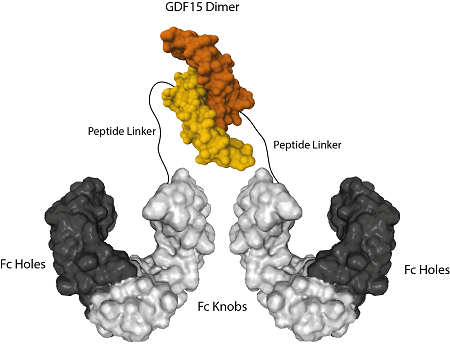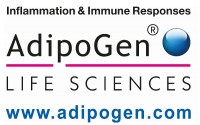Cookie-Einstellungen
Diese Website benutzt Cookies, die für den technischen Betrieb der Website erforderlich sind und stets gesetzt werden. Andere Cookies, die den Komfort bei Benutzung dieser Website erhöhen, der Direktwerbung dienen oder die Interaktion mit anderen Websites und sozialen Netzwerken vereinfachen sollen, werden nur mit Ihrer Zustimmung gesetzt.
Konfiguration
Technisch erforderlich
Diese Cookies sind für die Grundfunktionen des Shops notwendig.
"Alle Cookies ablehnen" Cookie
"Alle Cookies annehmen" Cookie
Ausgewählter Shop
CSRF-Token
Cookie-Einstellungen
FACT-Finder Tracking
Individuelle Preise
Kundenspezifisches Caching
Session
Währungswechsel
Komfortfunktionen
Diese Cookies werden genutzt um das Einkaufserlebnis noch ansprechender zu gestalten, beispielsweise für die Wiedererkennung des Besuchers.
Facebook-Seite in der rechten Blog - Sidebar anzeigen
Merkzettel
Statistik & Tracking
Endgeräteerkennung
Kauf- und Surfverhalten mit Google Tag Manager
Partnerprogramm

| Artikelnummer | Größe | Datenblatt | Manual | SDB | Lieferzeit | Menge | Preis |
|---|---|---|---|---|---|---|---|
| AG-40B-0245-C050 | 50 µg | - | - |
3 - 9 Werktage* |
440,00 €
|
Bei Fragen nutzen Sie gerne unser Kontaktformular.
Bestellen Sie auch per E-Mail: info@biomol.com
Größere Menge gewünscht? Bulk-Anfrage
Bestellen Sie auch per E-Mail: info@biomol.com
Größere Menge gewünscht? Bulk-Anfrage
Growth and differentiation factor 15 (GDF15, also known as macrophage inhibitory cytokine-1... mehr
Produktinformationen "Fc (LALA-PG)-KIH (human):GDF15 (mouse) (rec.)"
Growth and differentiation factor 15 (GDF15, also known as macrophage inhibitory cytokine-1 (MIC-1)), is a member of the transforming growth factor (TGF)-beta superfamily and was initially identified in activated macrophages. GDF15 acts through a recently identified receptor called Glial-derived Neurotrophic Factor (GDNF) Receptor Alpha-Like (GFRAL) which signals through the Rearranged during Transfection (RET) tyrosine kinase receptor. GDF15 is highly expressed in placenta and brain, and it is expressed at lower levels in kidney, pancreas, prostate and colon. Similar to other TGF-beta family proteins, GDF15 is synthesized as a large precursor protein that is cleaved to release the mature protein that shares 66% and 97% amino acid sequence identity with the human and rat proteins, respectively. Biologically active GDF15 is a disulfide-linked homodimer of the mature protein. The effects of GDF-15 are pleiotropic and include appetite regulation, actions on metabolism, pregnancy, cell survival, immune response and inflammation. GDF-15 also plays different roles in the pathophysiology of cardiovascular disease, autoimmunity, cancer-associated anorexia/cachexia and diabetes. High levels of GDF15 cause anorectic effects and cachexia. largely if not exclusively, through the suppression of food intake via modulation of neuropeptide Y and pro-opiomelanocortin levels. Various functions have been reported for GDF15, including inhibition of TNF-alpha production from lipopolysaccharide-stimulated macrophages and the induction of cartilage formation. GDF15 promotes also neuronal survival. GFRAL and GDF15 signaling is implicated in diet-based obesity and insulin resistance. GDF15 is cardioprotective via inhibition of platelet activation, limiting atherosclerosis, promoting recovery following myocardial infarction and regulating angiogenesis. The protein Fc (LALA-PG)-KIH (human):GDF15 (mouse) (rec.) is produced by using two different vectors, one encoding for the Fc Knobs (LALA-PG) (human):GDF15 (mouse) sequence (synthesizing a protein of 45kDa) and one encoding for the Fc Holes (LALA-PG) sequence (synthesizing a protein of 30kDa). Both vectors transfected into HEK293 cells produce both Fc molecules (Knobs-into-Holes technology, J.B. Ridgway, et al., Protein Eng. 9, 617 (1996)) required for dimerization and for secretion of the final protein Fc (LALA-PG)-KIH (human):GDF15 (mouse) (rec.). This Fc-KIH format allows our mouse GDF15 protein to form a dimer that is the most active structure to bind and activate the GFRAL and RET receptor complex. The Fc contains the mutations LALA-PG that abolish the interaction between the Fc and FcgammaRs and therefore Fc undesirable effects.
| Schlagworte: | MIC-1, GDF-15, Growth/differentiation factor 15, Macrophage inhibitory cytokine 1 |
| Hersteller: | AdipoGen Life Sciences |
| Hersteller-Nr: | AG-40B-0245 |
Eigenschaften
| Konjugat: | No |
| Wirt: | Human cells |
| Spezies-Reaktivität: | human |
| MW: | 4530 kD |
| Reinheit: | >95% (SDS-PAGE) |
| Format: | Solid |
Datenbank Information
| KEGG ID : | K05504 | Passende Produkte |
| UniProt ID : | Q9Z0J7 | Passende Produkte |
| Gene ID | GeneID 23886 | Passende Produkte |
Handhabung & Sicherheit
| Lagerung: | -20°C |
| Versand: | +4°C (International: +4°C) |
Achtung
Nur für Forschungszwecke und Laboruntersuchungen: Nicht für die Anwendung im oder am Menschen!
Nur für Forschungszwecke und Laboruntersuchungen: Nicht für die Anwendung im oder am Menschen!
Hier folgen Informationen zur Produktreferenz.
mehr
Hier kriegen Sie ein Zertifikat
Loggen Sie sich ein oder registrieren Sie sich, um Analysenzertifikate anzufordern.
Bewertungen lesen, schreiben und diskutieren... mehr
Kundenbewertungen für "Fc (LALA-PG)-KIH (human):GDF15 (mouse) (rec.)"
Bewertung schreiben
Loggen Sie sich ein oder registrieren Sie sich, um eine Produktbewertung abzugeben.
Zuletzt angesehen


